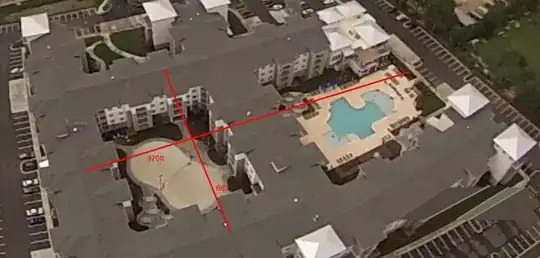I work for a multifamily housing developer. We build apartments. In this case, we are building a facility with about 600 beds (~220 separate housing units).
The density is that of a typical apartment complex in a sub-metropolitan area. There are 4 stories in this one I think (maybe 3), and each apartment has its own short-range wireless router. The developer is including wifi in each room, with the equipment already installed and ready to use. A few of the wifi units have been vandalized or damaged, but this costs so little ($75 for a 5ghz wireless router) to replace that we plan to repeat this simple solution in our next 250 unit development.

The above description is actually somewhat fictitious. In reality the development is rigged with several strategically placed "WAP" repeaters which reside outside of the residents' rooms in the hallways. We've spent well over $300,000 for this equipment and here's the rub---25% of the apartments are unable to connect to the internet using these WAP wifi signals. For the ~75% of units where it works there are no complains, its been described as a problem which "you either have or you don't". There isn't much of a grey area.
The company hired to install & maintain the system is a no-name, regional company (I can't remember their name right now but will include later when I find out), and have been stopping by twice a week, every week for the past month now. They've brought in experts from California & Japan (we're in Georgia) and still have not discovered what exactly the problem is.
My comment and concern after this massive mistake on our part (not delivering internet to paying tenants who've been told internet is included is like not delivering water or electricity), aside from choosing what is obviously an incompetent firm to install the system, is that maybe it is over-engineered for the task delivering the internet to our tenants.
I'm no electrical engineer, but I was thinking (during the meeting that I spoke up about it) that if we simply want all of our tenants to have wifi & all of the units have multiple ethernet jacks, why can't we just manage the whole system through wired ethernet systems for each (metering bandwidth as necessary during peak hours), with the (typical password-protected) wireless component as the last leg of the delivery system?
I've lived in an apartment (which did not directly provide the internet to its residents) and regularly observed >30 wifi networks when I logged in to my own. Not once did I have problems with wifi interference due to the density of separate networks in my apartment area.
So I floated the idea of a this simplified approach on our next deal. I'm told, however, by some of the guys on our construction team (who have been pitched, I think, on this $300K+ WAP-Repeater network) that were we to set up a separate wireless network in each of the rooms of our development, the interference caused by this would be so bad that the residents' internet wouldn't work reliably due to wireless interference.
The density of the apartments is typical for a 3-4 story 150-250 unit apartment development. Its all one contiguous building, but the building is made up of several wings separated by multiple courtyards. I've included an aerial photo of this site complete with some rough dimensions the site
So my question isn't necessarily the one in the header. If you have an answer for that, that's great, but I'm generally just trying to figure out if we've been taken advantage of or not. I've just never experienced the wifi interference that our construction partners have been educated to worry about, and, again, have seen as many as 30+ wifi networks in range when connecting to my wifi network without a single problem...
EDIT: I think this is a video from the manufacturer of the hardware we've been using on the subject of interference. This video is part of a larger series of sales videos that I've recently discovered.. http://www.youtube.com/watch?feature=player_detailpage&v=-6l0--rI8jA#t=166